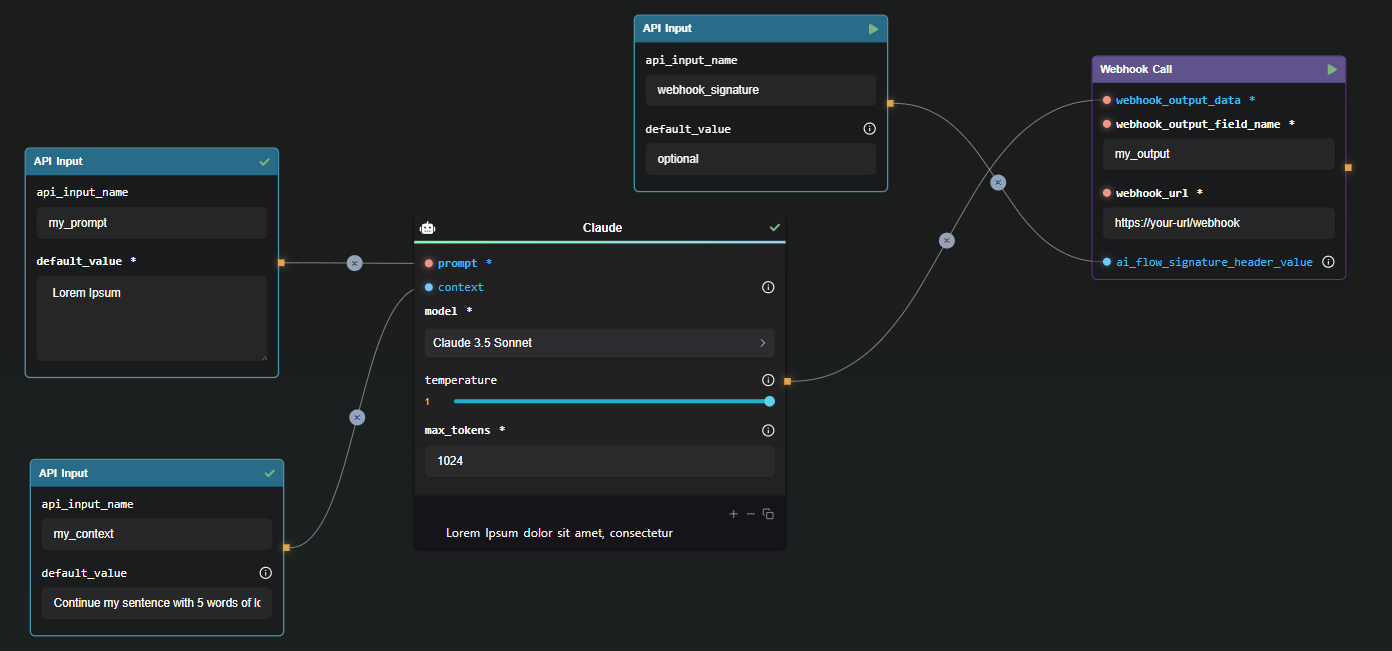Webhooks
Webhook Node
The Webhook Node is a powerful tool that allows you to send outputs as webhooks. This node can be configured to send specific outputs from your flow to a designated webhook URL. Additionally, you can set a custom signature that will be included in the AI_FLOW_SIGNATURE header. This signature can also be injected via an API Input Node for added flexibility and security.
Configuration
To configure the Webhook Node, follow these steps:
- Add the Webhook Node: Drag and drop the Webhook Node into your flow.
- Set the Webhook URL: Specify the URL where the webhook will be sent.
- Configure Outputs: Select the outputs from your flow that you want to send to the webhook.
- Set Custom Signature: Optionally, set a custom signature. This signature will be included in the
AI_FLOW_SIGNATUREheader of the webhook request. - Inject Signature via API Input: If desired, configure an API Input Node to dynamically inject the custom signature into the Webhook Node.
Example
Here's a basic example of how to configure a Webhook Node:

In this example, the Webhook Node is configured to send the output my_output to the specified webhook URL. A custom signature is set to ensure the webhook request can be authenticated on the receiving end.
The webhook will send data structured as follows:
{
"my_output": "Lorem Ipsum dolor sit amet, consectetur"
}
You can add multiple webhook to your flow. The Webhook Node has an output handle and functions like a transition node in a flow. This means it will pass the output unaltered to the next node, allowing you to include intermediate results from your flow in the final response if desired.
Global Webhook
(incoming)